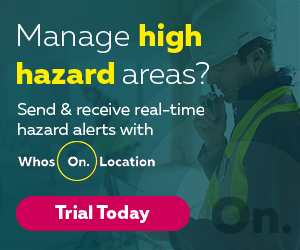Managing contractor inductions, insurances and access rights
The use and management of contractors has certainly changed dramatically over the last 10 – 15 years. It used to be that a paper sign-in book or a quick conversation with reception or a security guard was enough to allow contractors on-site.
The regulatory obligation of businesses has now evolved, and the informal processes of the past are no longer enough to manage contractors on your manufacturing site.
At a very basic level, to manage contractors you need to be able to:
- Know when they logged into and out of your site
- Make them aware of Health & Safety policies and any potential hazards
- Induct them to your site procedures and policies
- Keep a record of contractor insurances and when they expire
As a business you have a requirement to take practical steps to keep contractors on your site safe. This doesn’t need to be a daunting task, and here are four simple guidelines to follow:
- Know who is on-site: Organisations throughout the world are obligated under various Acts and Regulations to ensure the safety of people while on-site. Without a robust process for reporting on non-staff presence in real-time, it’s difficult to demonstrate compliance.
- Maintain guest confidentiality: The privacy of your contractors is often overlooked. A handwritten visitor book is not a secure sign-in method and can surrender confidential information to other visitors at a mere glance. You could also be unwittingly showing who your business has contacts with, or which competitors might be bidding for a contract!
- Keep it professional: Easy-to-use contractor sign-in, ensuring in the event of an emergency you can easily account for all people on-site.
- Contractors are customers too: Ensure your brand is well presented every time someone interacts with it.
While contractors can be managed manually, it is time consuming, expensive and hard to keep the information up to date. Like many aspects of business, software automation is leading the charge in the contractor management space.
By using software such as WhosOnLocation, businesses can have peace of mind. They know they are meeting regulatory obligations (and are notified immediately if something’s wrong); they are easily able to access up-to-date records; and they have access to robust reporting when it’s needed (for example, in an emergency evacuation).
The benefits of introducing contractor management software to your business are abundant. You will see…
- Improved site security, giving greater protection of your assets and people
- Improved safety of your people
- A reduction in the risk of accident and illness
- Greater satisfaction for the contractor, and you as the client
- Fewer incidents, losses, stoppages and delays
- A cutback in the time spent dealing with problems
- Continuous improvement in practices
- Financial savings
When shopping around for contractor management software, here are the top questions you need to ask:
- Can the software integrate with other apps if required? This allows you to leverage existing investments in other applications.
- Is the software able to manage and automatically notify when requirements are due to expire or need to be updated? And can inductions, insurances, access rights, hazard notifications, qualifications and certificates be managed electronically? These not only free up staff time but also ensure you are always compliant.
- Can the system alert you of potential risks to contractors and employees on-site? For example, can you set up a notification when a contractor is working alone? This will mean you are better able to monitor the Health and Safety of everyone on-site.
- Does the software offer visitor management too? Tracking your contractors in the same software as your visitors means those who manage your entry points only need to learn and manage one application, which offers the following efficiencies:
- One software licence fee
- One place to load, update and notify hazards
- No entry to unauthorised contactors or those banned
- Is it easy to use and setup? You want to ensure that you can get your software up and running for your business quickly (24 – 48 hours for a web application) and with as much ease as possible.
- Does the software offer reporting of who’s on-site at any given time? To meet your Health & Safety requirements, track movements and undertake a roll call in an emergency.
 It’s important that you find the right software for your business needs. If it’s the right fit, contractor management software won’t just improve your Health and Safety practices, you’ll also see its positive effect on your services, productivity, and customer experience.
It’s important that you find the right software for your business needs. If it’s the right fit, contractor management software won’t just improve your Health and Safety practices, you’ll also see its positive effect on your services, productivity, and customer experience.



